Fishing Rod, Line And Lures Item Number: E7475-0 from the National Museum of Natural History
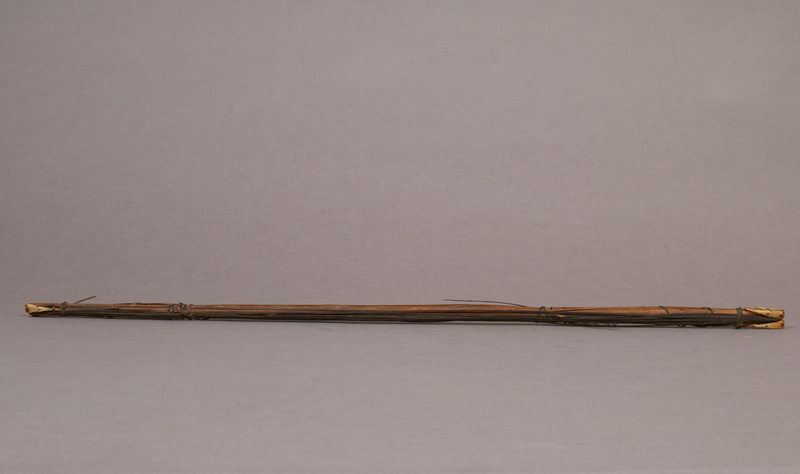
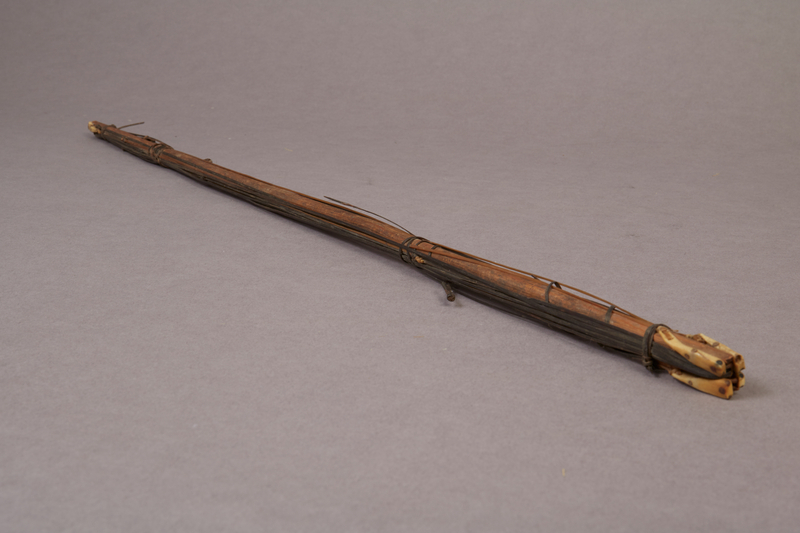
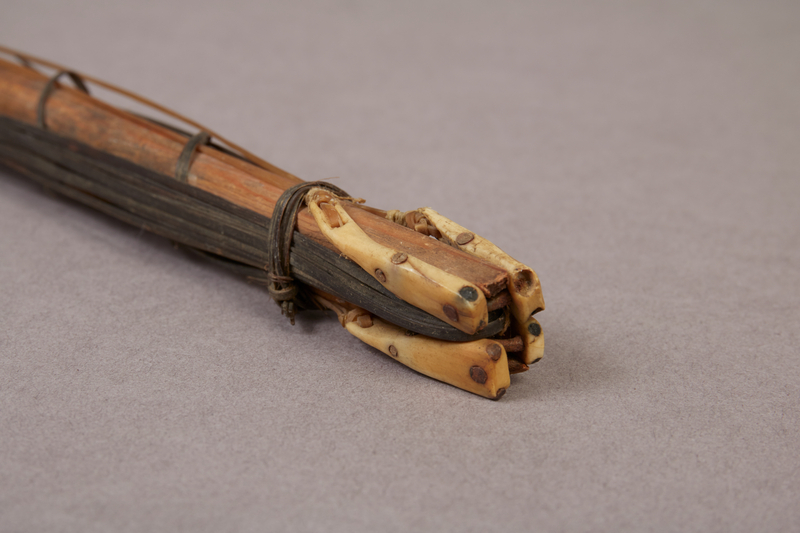
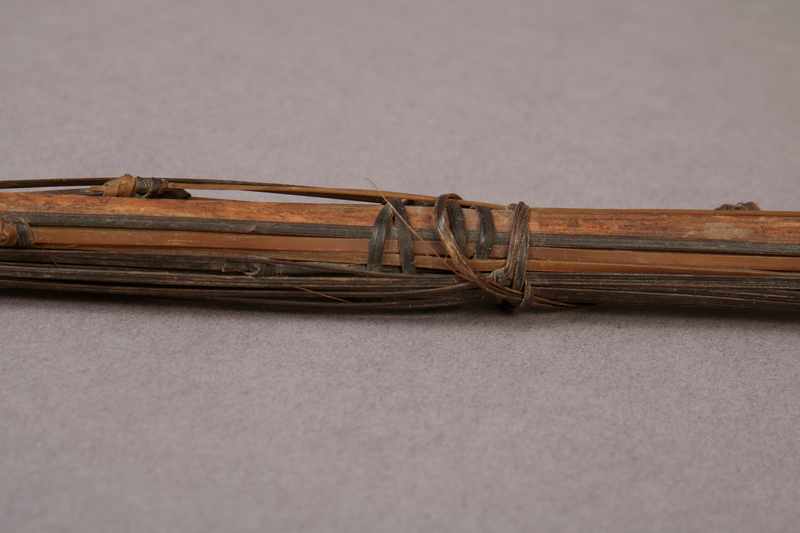
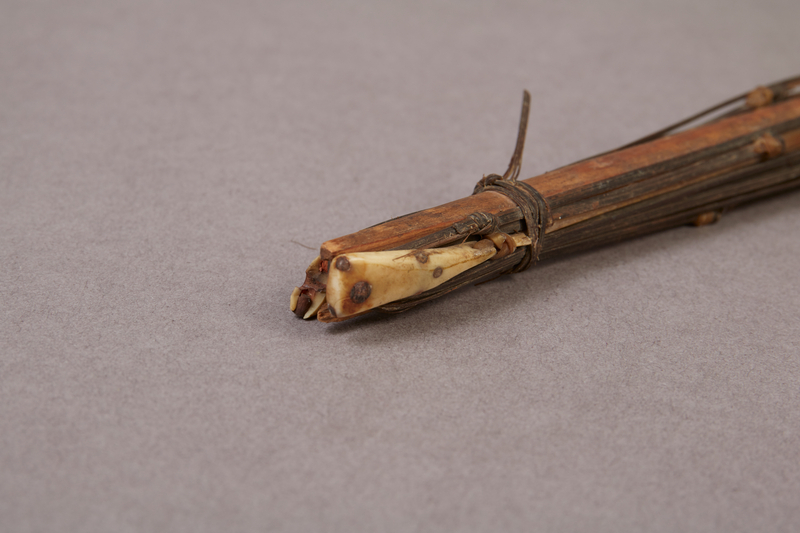

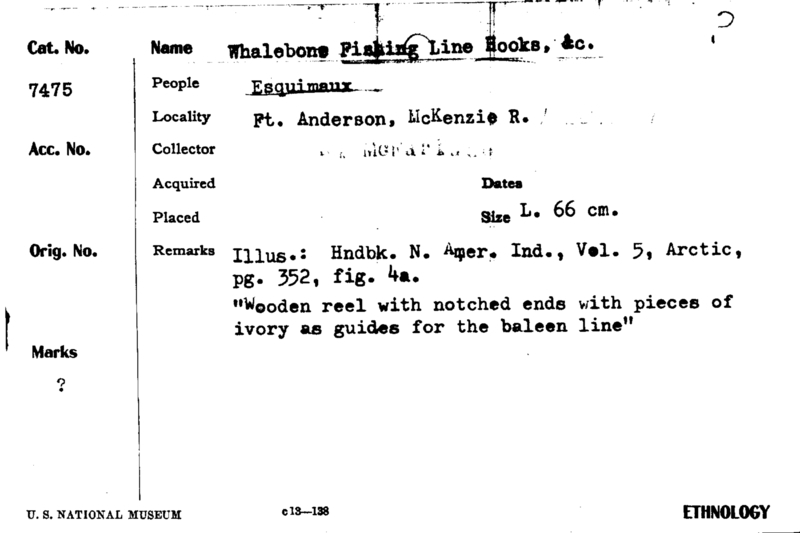
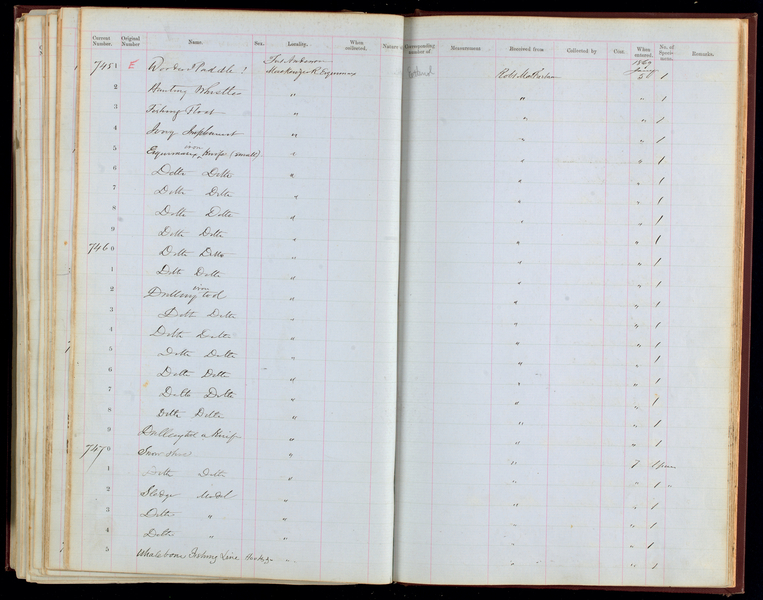
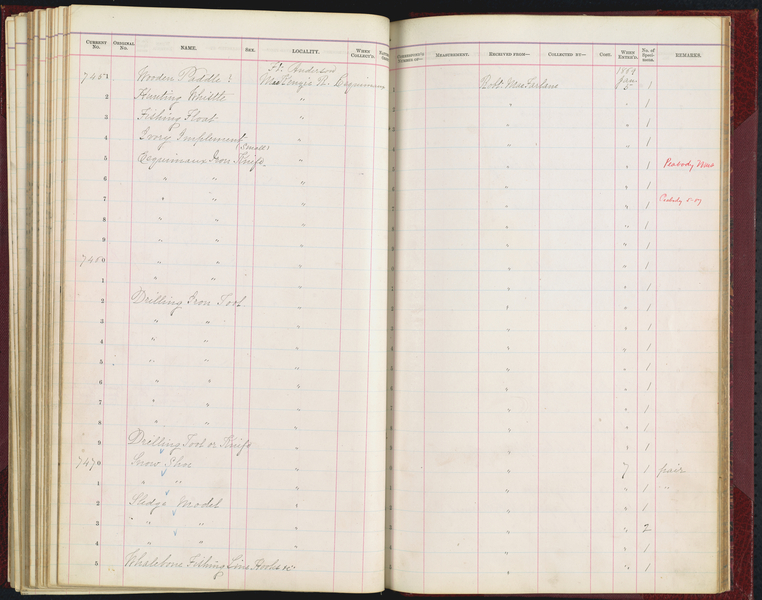
Notes
FROM CARD: "ILLUS.: HNDBK. N. AMER. IND., VOL. 5, ARCTIC, PG. 352, FIG. 4A. "WOODEN REEL WITH NOTCHED ENDS WITH PIECES OF IVORY AS GUIDES FOR THE BALEEN LINE."Source of the information below: Inuvialuit Pitqusiit Inuuniarutait: Inuvialuit Living History, The MacFarlane Collection website, by the Inuvialuit Cultural Resource Centre (ICRC), Inuvik, N.W.T., Canada (website credits here http://www.inuvialuitlivinghistory.ca/posts/12 ), entry on this artifact http://www.inuvialuitlivinghistory.ca/items/50 , retrieved 2-5-2020: Fishing rod, line and lures. This type of fishing tackle was used when fishing from shore. The rod is made from a cylindrical piece of wood, and has one or more baleen lines wrapped lengthwise around it that have been secured for storage with several short lengths of baleen. At each end there are four small lures whose hooks are wedged into the rod. The lures are made from antler, bone, or ivory, and are decorated with split beads set into shallow holes drilled into the surfaces of the shanks. The lures are attached to the main section of the lines by shorter and lighter coloured pieces of baleen, perhaps to make that part of the line less visible to fish. More information here: http://www.inuvialuitlivinghistory.ca/item_types/21: Fishing tackle was used for catching fish in rivers and streams during the open water season, and for jigging through holes chiseled through ice in winter and spring. Fishing tackle in the MacFarlane Collection includes fishing rods (iqaluksiun) with lines (ipiutaq) made from baleen, and bone and antler lures (niksik) with iron hooks. Less commonly, fishhooks were made from wood.
Item History
- Made in Northwest Territories, Canada
- Collected in Northwest Territories, Canada
- Received from Roderick R. MacFarlane on January 7, 1869
What
Who
- Culture
- Eskimo, Inuit and Inuvialuk
- Received from
- Roderick R. MacFarlane
Where
- Holding Institution
- National Museum of Natural History
- Made in
- Northwest Territories, Canada
- Collected in
- Northwest Territories, Canada
When
- Acquisition Date
- on January 7, 1869
Other
- Accession Number
- 69A00012